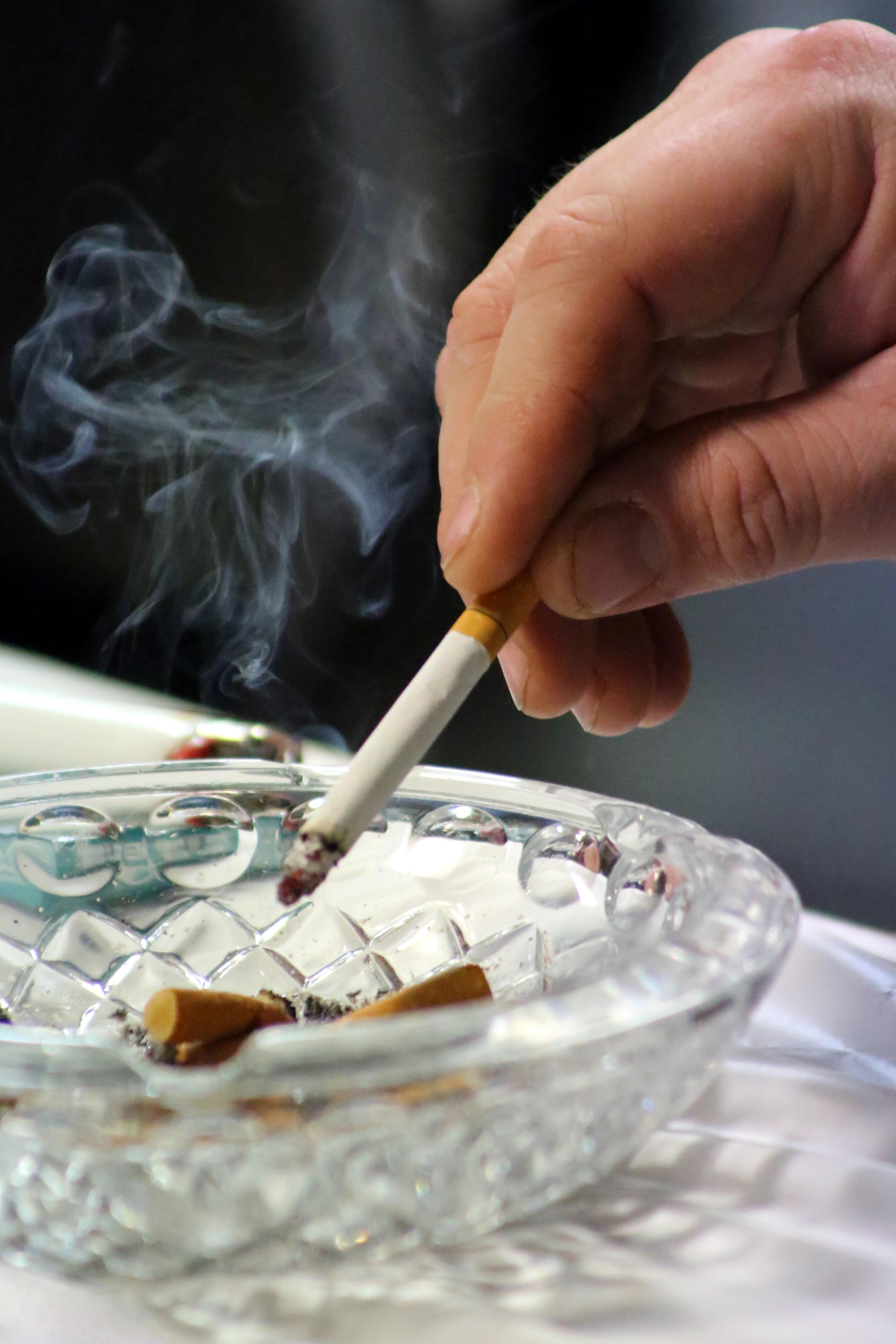Daily Business Report-May 2, 2019
Residue from smoking tobacco and vaping electronic cigarettes includes a mixture of toxic chemicals known to cause cancer and asthma. (Photo: DodgertonSkillhause)
First-ever Thirdhand Smoke
Resource Center opens
By Jeff Ristine | SDSU
Researchers at San Diego State University and the University of Southern California (USC) have opened the nation’s first public resource center on thirdhand smoke, the toxic residue from tobacco smoke that can saturate homes, businesses, hotels, cars and casinos for years after the last cigarette is stubbed out.
Funded by revenues from a cigarette tax increase approved by California voters in 2016, the Thirdhand Smoke Resource Center will offer educational materials, workshops and additional resources on the hidden substances and the health hazards they pose.
A new website, thirdhandsmoke.org, is the centerpiece of the effort to increase public awareness of thirdhand smoke.
“There’s a big illusion that when tobacco smoke disappears, we’re safe,” said SDSU psychology professor Georg Matt, director of the resource center. “Unfortunately, some of the most toxic compounds clinch to surfaces. They get embedded in carpets, they coat walls, they penetrate into walls. They become part of the indoor environment.”
______________________________
“They get embedded in carpets, they coat walls…They become part of the indoor environment.”
______________________________
The particle and vapors also become embedded in ceilings, carpets, furniture, cabinets, bedding and toys and have been detected years after smoking has stopped. They impact hotel and motel patrons, apartment tenants, resale homebuyers and taxi or ride-hailing passengers in places exposed to previous smoking.

In a recent study of 220 San Diego County apartments, smoke residue was detected in all 220 units despite very few of them housing smokers as tenants at the time. In some units, the levels were as heavy as those of smoking rooms at hotels.
According to Matt, the center and its website are intended to “make the public more aware of thirdhand smoke” and help create indoor environments free of tobacco smoke pollutants.
Health hazards
Residue from smoking tobacco and vaping electronic cigarettes includes a mixture of toxic chemicals known to cause cancer and asthma. These chemicals can affect respiratory and cardiovascular health and may reduce the body’s ability to heal and fight infection.
Infants, small children and pets are particularly vulnerable because of the carpets and other surfaces they come into contact with or put into their mouths.
Repainting a home or apartment does not eliminate heavy thirdhand smoke contamination, Matt said. “You really have to gut the interior and rebuild, he said. “Take out the drywall and the floors if you really want to get that stuff out.”
“You can imagine someone with a pack-a-day habit over a 10-year period,” Matt said. “There are massive amounts of nicotine as well as other carcinogens that just stay behind.”
In cars driven by heavy smokers, he said, “there’s not really a solution.” Thirdhand smoke pollutants are in the upholstery, ceiling liners and ventilation system.
In addition to its educational materials, the center will conduct workshops and webinars for health professionals, health advocates, policymakers, apartment and hotel managers, car dealers and members of the general public who want to learn more about thirdhand smoke. The center also plans to develop do-it-yourself test kits for measuring thirdhand smoke and will work with businesses and community groups to test for thirdhand smoke pollution.
SDSU and USC are both members of the Thirdhand Smoke Research Consortium funded by California’s Tobacco-Related Disease Research Program, created by the state Legislature from Proposition 56 of 2016. The $2-per-pack tax—the first successful cigarette tax increase since 1998—was approved with more than 64 percent of the vote. Lawrence Berkeley National Laboratory, the University of California, Riverside, and the University of California, San Francisco also participate in the consortium.
The Center can be reached at contact@thirdhandsmoke.org or 619-594-3018.
__________________
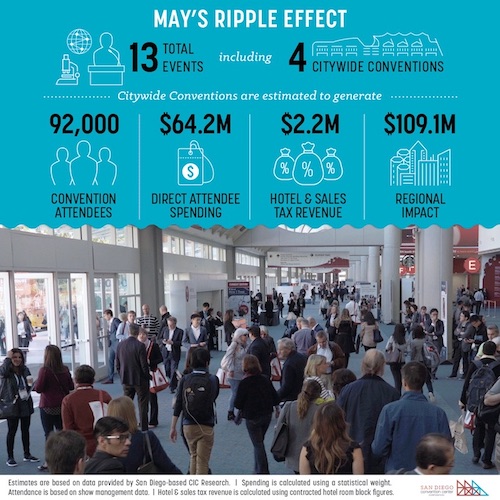
Summary of upcoming major events
at the San Diego Convention Center:
• May 3-7: Society of Cataract & Refractive Surgery (ASCRS), 14,000 attendees.
• May 9-13: IMMUNOLOGY 2019, 5,000 attendees.
• May 10: Elevate Expo 2019, 2,000 attendees.
• May 18-21: Digestive Disease Week Annual, 14,000 attendees.
• May 31-June 1: Rock ‘n’ Roll San Diego Marathon & Health/Fitness Expo, 60,000 attendees.
__________________

Pacific Building Group completes
five law firm construction projects
General Contractor Pacific Building Group has completed construction on five San Diego-area law firms’ offices: Kilpatrick Townsend; Perkins Coie; Sullivan Hill; Robbins Arroyo; and Schor Vogelzang.
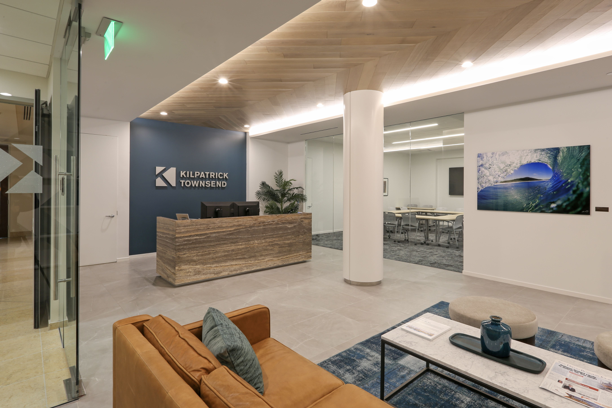
• Kilpatrick Townsend’s new 10,000-square-foot office space in Del Mar Heights underwent a complete transformation before the firm moved in. The extensive tenant improvements include upgraded audiovisual equipment, new HVAC systems, upgraded finishes, glass walls and doors and custom millwork. Cooper Carry was the architect and CBRE provided project management services.
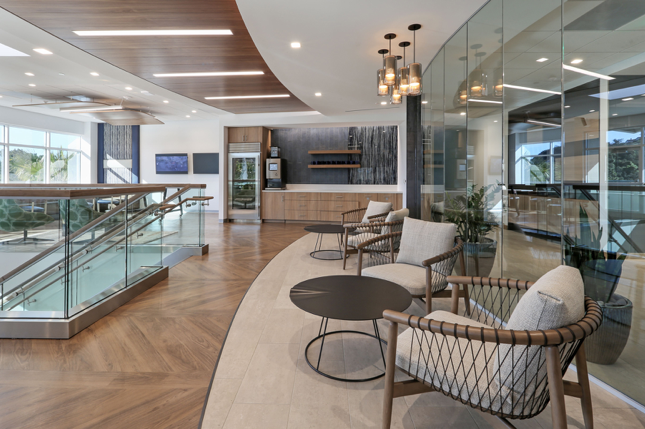
• The Perkins Coie project involved a full demolition of the firm’s two-story, Class A office building in Del Mar Heights. The international law firm wanted office space optimized for aesthetics and sound transmission mitigation. PBG worked closely with an acoustician to deliver an attractive space that is also functional with collaborative areas and integrated technology
• The law firm of Robbins Arroyo chose an existing 24,000-square-foot, single-story shell building for its new office. Located in the UTC area, the contemporary space features roll-up doors, La Cantina sliding doors, all-glass office fronts, skylights and upgraded finishes. The project also includes a new kitchen, restrooms, shower rooms and new electrical and mechanical systems. The architect was ID Studios.
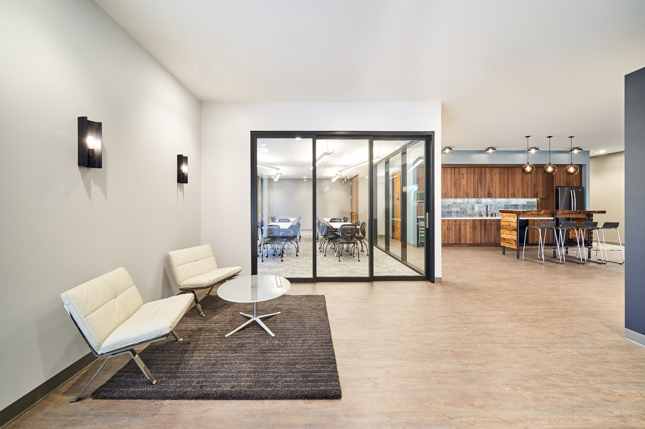
• Schor Vogenzang turned to PBG for a complete remodel of its 4,350-square-foot office in Downtown San Diego. The project features structural upgrades to allow for an open-area concept, a new conference room, break area and private offices.
• PBG’s work at Sullivan Hill’s office expanded one full floor in a Downtown San Diego high-rise through the use of a MEP Design/Build process. PBG also established and maintained a budget through value engineering from preconstruction through completion. Ware Malcomb was the architect.
__________________
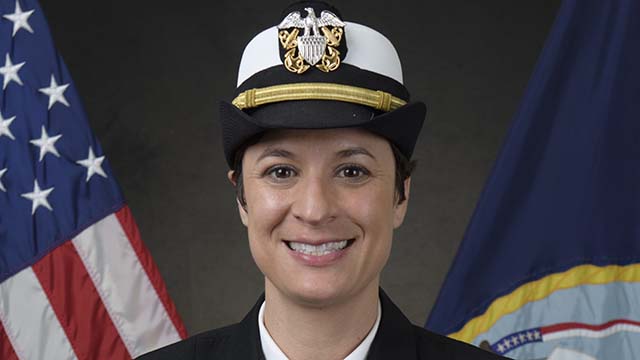
Woman takes command of S.D.-ported
littoral combat ship USS Tulsa
City News Service
The USS Tulsa, which is homeported at Naval Base San Diego, has a new commander. Cmdr. Audrey Oxley took over as the Independence-variant littoral combat ship’s commander on Monday. Previously, Oxley had served as the ship’s executive officer.
Comdr. Drew Borovies relinquished command of the USS Tulsa for the first time since it was commissioned in February.
__________________
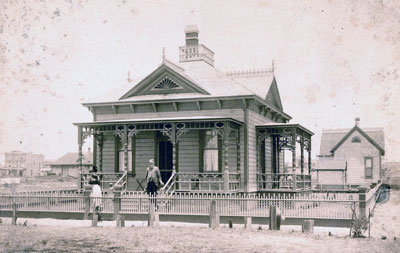
Henry Graves/Top Gun Cottage saved
By Save Our Heritage Organisation
The oldest, and last significant Victorian beachfront cottage in Oceanside has been granted a new life. Featured in the 1986 movie “Top Gun,” it has been known ever since as the Top Gun Cottage—the movie home of Tom Cruise’s flight instructor and love interest, played by Kelly McGillis. This Victorian-era seaside cottage is one of the last survivors from Oceanside’s founding during the great building boom of the 1880s.
Once on SOHO’s Most Endangered List, SOHO and community partners John Daley and the Oceanside Historical Society were able to work with developer Jeremy Cohen of S.D. Malkin Properties Inc. and the city of Oceanside to find a preservation solution. The exterior of the Henry Graves House will be restored and its interior adapted for a new use as the centerpiece of Oceanside’s much anticipated new oceanfront resort.
The house was built in 1887 by Graves as a vacation home and represents Oceanside’s origins and its development as a vacation and tourist destination. This seaside allure continues to this day with the new resort hotel.
The house has been temporarily relocated one block away for structural restoration. Afterwards, it will be moved to the north side of the resort on Pacific Street, for renovation, cosmetics, and final touches. The work will take approximately 18 months.
Bills that are objectionable—or just inconvenient—for powerful Democratic lawmakers have been dying in the Assembly without even a hearing. (Photo of the California Assembly via Creative Commons)
__________________

How powerful lawmakers are killing
California bills—without a peep
By Laurel Rosenhall | CALmatters
Gun control, school spending, curbs on greenhouse gases: With Democrats holding more power at the Capitol than they’ve had since the 19th century, California’s legislative pipeline is full this year with big, blue-state ideas.
In theory, no Democrat’s bill should be left behind. But that’s not what’s happening, and the reason is roiling both sides of the aisle in Sacramento.
The complaint? Democrats who lead legislative committees are using a powerful tool to kill bills before they even get a vote.
The tool? Simply doing nothing.
Under a rule the California Assembly put in place at the start of the current session, committee chairs can decide whether to bring a bill assigned to their committee up for consideration. As key deadlines came and went this month for bills to move out of committee, chairs used the new power to quash bills by just not scheduling them for a public hearing.
No hearing, no debate, no vote.
Democrats—who hold all the chairmanships because of their party’s mega-majority in the Legislature—flexed their muscle not only to bury GOP legislation, but also to silently sideline bills by fellow Democrats that might be embarrassing to publicly vote down.
Among the victims: Democratic legislation to alter the formula for funding public schools to devote more money to low-achieving students (a complex plan that stresses racial inequities); a bill to develop a strategy to phase out sales of gas-powered cars in favor of cleaner vehicles (guaranteed to create conflicts for Democrats whose constituents work in the oil industry); and a potentially divisive proposal requiring that gun owners lock up their weapons when they leave home.
“I was very frustrated,” said Assemblywoman Laura Friedman, a Democrat from Glendale whose bill on gun storage was shelved without a hearing.
“The committee is there to discuss areas of policy. If the chair has concerns about the policy, it’s my opinion that having it discussed in committee is the right approach.”
It’s the latest sign that Democrats’ growing majority in Sacramento doesn’t necessarily mean more unity. Democrats now hold about three-quarters of the Legislature’s seats—a margin that gives the party the potential for great power, but also makes it vulnerable to fracture under the weight of its ideological, geographic and socio-economic diversity.
Refusing to set a hearing for a bill isn’t the only way Dems are quietly killing Democratic legislation. Several progressive bills stalled this month because their authors knew they would fail in committee and so opted not to bring them up for a vote. They included measures to expand rent control, broaden data privacy protections and ban super-sized servings of soda.
But lawmakers have long had the face-saving authority to pull their own bill if they could tell it wasn’t going to pass. The change this year is in the Assembly, where members are grappling with the committee chairs’ new authority to not hear a bill. (The state Senate did not enact a similar rule change this year. Its custom has been to let chairs decide whether to set hearings.)
The lower house adopted new rules when the legislative session began, explicitly giving committee chairs the power to choose whether to hear legislation. Previously, committees generally heard all bills if the author wanted them heard, and it was unusual for a chair not to extend that courtesy.
The Assembly’s move to clarify that chairs can decide whether to set a hearing is in keeping with Speaker Anthony Rendon’s long-stated philosophy that committee chairs should have more power.
Assembly Republicans quickly jumped on the change as something that could doom their bills, and voted against the rule.
“Chairmen under these new rules would have the power to essentially kill a bill by denying it a hearing,” GOP Assemblyman Jay Obernolte said in December as the Assembly voted on the new rules. “And they would be able to do this… without a vote of the members of that committee and without any testimony from the public. That is a violation not only of the longstanding practice of this chamber, but also of the principles of democracy itself.”
Democratic Assemblyman Reggie Jones-Sawyer, who chairs the public safety committee that held Friedman’s gun storage bill, said that by not hearing it he’s giving supporters more time to resolve problems and bring it back next year. He wouldn’t say why he objected to the gun storage policy, though his committee’s analysis says it could conflict with local ordinances.
“I want to see if we can come together and make the bill much better so it’s not a contentious bill and we can get it through,” Jones-Sawyer said. “I’m trying to make sure the committee as a whole doesn’t kill the bill.”
Democratic Assemblywoman Shirley Weber said that in her more than six years in the Legislature—during which she’s carried plenty of controversial legislation—this month was the first time a committee chair has refused to hear one of her bills. Her legislation to change the formula for funding public schools so that more money would be devoted to student groups that post the lowest test scores was one of several measures related to the funding formula that were not heard in the education committee.
“Generally even if the chair opposes a bill they will set the bill for a hearing, and then people can vote it up or down,” Weber said.
The new way, she said, amounts to “a one-person decision.”
It’s striking a nerve across the political spectrum, from a Sierra Club lobbyist who’s angry that a clean-cars bill wasn’t heard, to a conservative Republican who’s fuming because her campus free-speech bill—making it harder for colleges to restrict who can speak at campus events—wasn’t brought up for a vote.
“When you don’t allow that bill to be heard then you don’t even have the discussion,” said GOP Assemblywoman Melissa Melendez. “The opportunity for a healthy debate is taken away.”
CALmatters.org is a nonprofit, nonpartisan media venture explaining California policies and politics.

